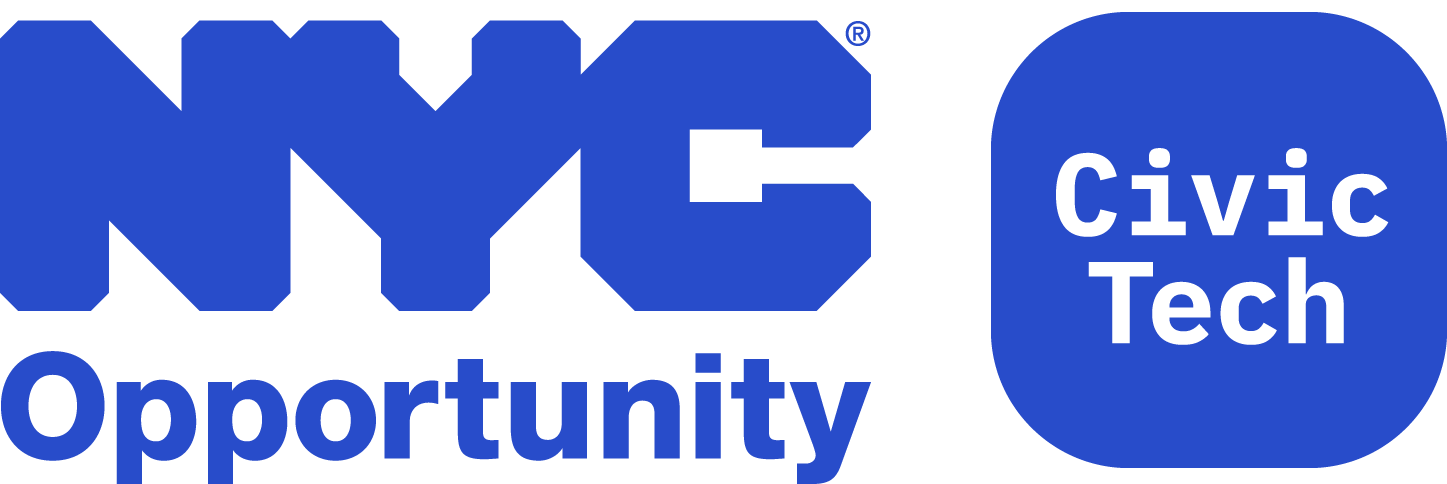Documentation site source for the NYC Benefits Screening API maintained by @nycopportunity. Screen clients for benefits at scale or create new benefits screening tools. Send household composition data to eligibility rules for 35+ City, State, and Federal programs including SNAP, Cash Assistance, WIC, HEAP, and more. To learn more about the API view the public documentation at screeningapidocs.cityofnewyork.us.
The site source is written in JavaScript (ES Module format), Dart Sass, and Twig templates. The source is compiled by the Patterns CLI (more details below) with some custom commands and configuration.
Clone this repository and checkout the env/development branch.
$ git clone https://github.com/CityOfNewYork/screeningapi-docs.git --branch env/developmentCreate a new feature branch based on env/development. For example; feature/new-page or fix/a-new-bug.
$ git checkout -b feature/new-pageInstall dependencies by running the following command;
$ npm iThen start the development server and asset watcher;
$ npm startThis will set the NODE_ENV to development which tells the development server to watch for specific file changes in the ./src directory (the CLI will print the globing patterns that are being watched) and compile views and assets into the ./dist/drafts directory. The site's main script will pull content in Markdown files from the drafts content branch of this repository.
The drafts directory serves as the local development site preview and the content preview in the production site. See Content Management below for more details.
The public-facing site is stored in the root of the ./dist directory. To preview the public-facing site locally and view published content in the content branch use the following command;
$ npm run productionThis will set the NODE_ENV to production but and run the same development server and source file watcher/compiler.
The site uses the Patterns CLI, also maintained by @nycopportunity, to build source files from the ./src directory to the ./dist directory. All of the commands from the CLI are available for compiling different asset types. It uses the Patterns Twig Plugin in place of the Slm Lang compiler for templating.
The CLI is configured by scripts in the ./config directory (each command in the CLI can have local project configuration). The build paths for production and development are set in the ./config/global.js
Custom commands that extend the Patterns CLI are stored in the ./bin directory.
The path to the content CDN is stored in the package.json. This is where the content branch is mapped to the production and the drafts branch is mapped to development.
After changes are made, create a pull request to migrate changes from your feature branch back into env/development. When the changes are approved by another developer create a merge commit or squash and merge (preferably squash for feature branches). Create and merge/squash another pull request from env/development into main.
The public-facing site (and drafts directory for content managers) is published from the ./dist directory to the gh-pages branch of this repository. To publish changes check out the main branch. Tag the repository with the latest version using the npm version {{ major / minor / patch }} command. For example;
$ npm version minorThen run the ghpages npm script build in production mode and then deploy to the GitHub Pages site.
$ npm run ghpagesThe API guide content is managed in the content branch using Markdown files. To edit these files and move them from draft to published follow these instructions;
Content is drafted in the drafts branch.
-
Viewing files. View the table of contents in the
draftsREADME file to find a link to each page's content source. -
Editing files. When you are on the file's page you will see the rendered Markdown preview. Click the pencil icon in the top right corner, just above the preview. Once you are in edit mode you can make and preview changes using GitHub Flavored Markdown syntax. View GitHub's guide on editing files in GitHub to learn more.
-
Commit changes. When you are done making changes you will commit your changes with a message reflecting the scope of the change. The commit description underneath the message is optional. Commit directly to the
draftsbranch.
You can now view drafted changes in the site in the drafts directory on the public site.
When you are done drafting changes create a new pull request to stage changes from the drafts branch to the content branch.
-
Create a new pull request by going to ./compare or go to the Pull Requests tab at the top of the repository page then click New pull request.
-
In the Compare changes page change the base branch from
base:maintocontentand the compare branch fromcompare:mainbranch todrafts. -
You will be able to see a preview of the changes in your pull request. Click Create pull request to create a title, description, and add reviewers. View GitHub's guide on creating pull requests to learn more.
-
Click Create pull request again in the next view to make the pull request.
Once the pull request is approved changes are ready to be published. Click Merge pull request. The content will be live.
The Mayor's Office for Economic Opportunity is committed to sharing open source software that we use in our products. Feel free to ask questions and share feedback. Interested in contributing? See our open positions on buildwithnyc.github.io. Follow our team on GitHub @nycopportunity and @cityofnewyork:nycopportunity or browse our work on Github.
